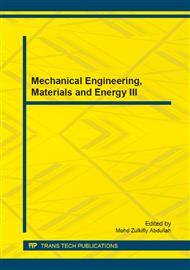p.635
p.639
p.643
p.647
p.652
p.656
p.660
p.664
p.668
Control System Design of Ducted Fan Aerial Vehicle
Abstract:
This paper carried out the control system design of a DFV based on dynamical characteristic analysis, and flight experiments were carried out to validate the performance of the control system. Firstly, the characteristics such as outstanding and control difficulty were pointed out, and then the control strategy such as three forms of translation is proposed. In the end, the controller was realized and tested by a series of experiments, and the excellent performance was demonstrated by the experimental results.
Info:
Periodical:
Pages:
652-655
Citation:
Online since:
December 2013
Authors:
Keywords:
Price:
Сopyright:
© 2014 Trans Tech Publications Ltd. All Rights Reserved
Share:
Citation:


